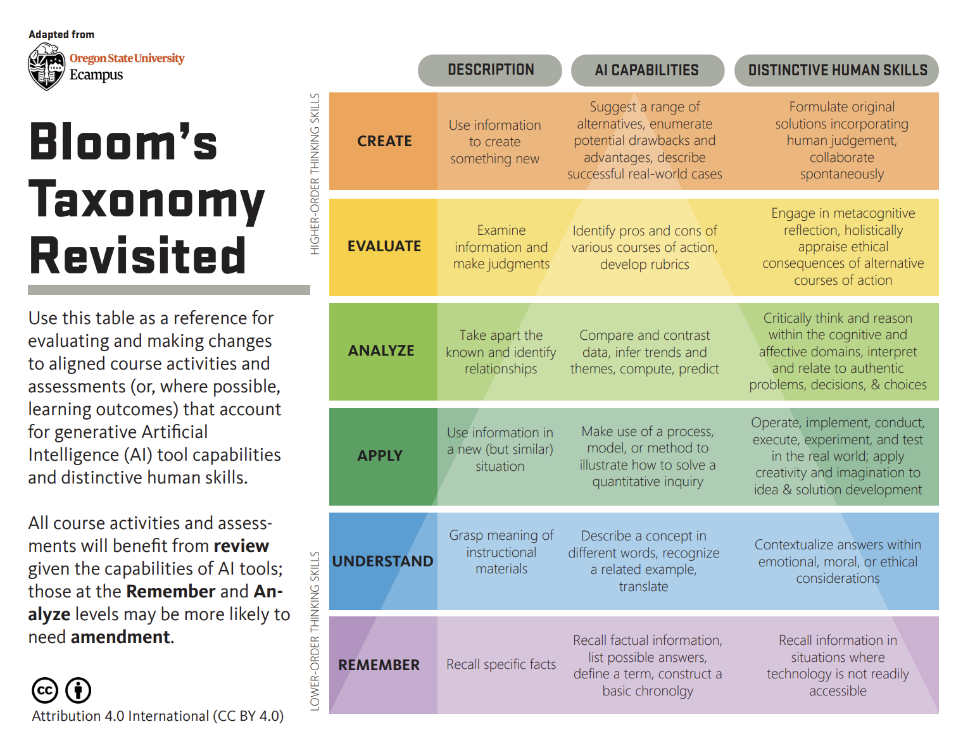Overview
The original Taxonomy of Educational Objectives, commonly referred to as Bloom’s Taxonomy, was created by Benjamin Bloom in 1956, and later revised in 2001. Bloom categorized and classified the cognitive domain of learning into varying levels according to complexity and richness. As you travel up the pyramid, the level of complexity increases. This framework is important for designing a learning experience because it helps instructors identify, classify, and outline what students are expected to learn in the course.
In Bloom’s Taxonomy from 1956, he outlined six main categories: knowledge, comprehension, application, analysis, synthesis, and evaluation. In 2001, a group of cognitive psychologists, curriculum theorists, instructional researchers, and testing specialists revised the category names of Bloom’s Taxonomy from nouns to verbs.
Continue exploring the page or request assistance from the Center for Instructional Technology and Training.
Application

Text description of Bloom's Taxonomy graphic above
Below is Bloom's Taxonomy Revisited, which differentiates between AI capabilities and distinct human skills for each learning level:

PDF version Bloom's Taxonomy Revisited
When writing student learning objectives and ensuring academic rigor, it’s helpful to refer to Bloom’s Taxonomy. Referring to various learning levels from Bloom’s Taxomony will ensure that you are addressing the appropriate level of learning and scaffolding assessments where necessary. Bloom’s Taxonomy invites us to reflect about what we are asking students to do with the information we want them to learn.
If you need help, it might be beneficial to use generative AI as a starting point. Generative AI tools can help evaluate student learning objectives for clarity and alignment. Consider asking a generative AI tool to assist with:
- Reviewing the alignment of a set of SLOs with the course goals and/or assessments.
- Refining an objective for clarity and suggest related objectives as replacements or for scaffolding.
- Suggesting assessment ideas based on the SLOs.
Analyzing a set of SLOs for gaps in the learning levels in Bloom’s Taxonomy and/or the three learning domains of cognitive, psychomotor, and affective.
Krathwohl, D. R. (2002). A revision of Bloom’s Taxonomy: An overview. Theory into Practice, 4 (Autumn).
Knowledge Domain Verbs
| Remembering | Understanding | Applying | Analyzing | Evaluating | Creating |
|---|---|---|---|---|---|
| Recall specific facts. | Grasp meaning of materials. | Use information in a new situation. | Identify schemas or relationships. | Use information to make judgments. | Create or develop something new. |
|
define |
associate |
apply |
analyze |
appraise argue assess choose convince critique debate defend editorialize estimate evaluate grade judge justify measure persuade predict rank rate reframe summarize support |
adapt |
References and Additional Resources
Further Exploration
- Krathwohl, D. R. (2002). Theory into Practice, 4 (Autumn). A revision of Bloom’s Taxonomy: An overview.
- Bloom’s Taxonomy Resource
